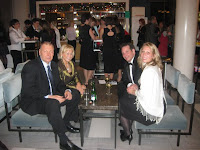 Ampelmännchen, little traffic light men, are a Berlin phenomenon. In 1961, a traffic psychologist introduced the first pedestrian signals in East Berlin. The desgin was created because road-users react more quickly to appealing symbols.
Ampelmännchen, little traffic light men, are a Berlin phenomenon. In 1961, a traffic psychologist introduced the first pedestrian signals in East Berlin. The desgin was created because road-users react more quickly to appealing symbols.
Prior to German reunification in 1990, the two Germanys had different Ampelmännchen. It's a generic human figure in West Germany while in East Germany the figure wears a hat.
 After unification in 1990 there were attempts to standardise all traffic signs to the West German standard. The East German lights were dismantled and replaced. This led to calls to save the East German Ampelmännchen as a part of East German culture. In 2005, the little man in the hat made his return to East Berlin.
After unification in 1990 there were attempts to standardise all traffic signs to the West German standard. The East German lights were dismantled and replaced. This led to calls to save the East German Ampelmännchen as a part of East German culture. In 2005, the little man in the hat made his return to East Berlin.The Ampelmännchen is one of the few features of communist East Germany to have survived the Iron Curtain. Ampelmännchen has acquired cult status and is a popular souvenir item in Ampelmännchen stores.
Update: In Dresden, they also have Ampelfrauen.






 The Gendarmenmarkt is a very cool square. It was named after Gens d'Armes, a Prussian regiment consisting of French Huguenot immigrants. Local Huguenots worshipped at the Französischer Dom (French Cathedral). On the opposite side is the Deutscher Dom (German Cathedral) [in the picture]. Between the two cathedrals is the Berlin Konzerthaus. Here was one of the only
The Gendarmenmarkt is a very cool square. It was named after Gens d'Armes, a Prussian regiment consisting of French Huguenot immigrants. Local Huguenots worshipped at the Französischer Dom (French Cathedral). On the opposite side is the Deutscher Dom (German Cathedral) [in the picture]. Between the two cathedrals is the Berlin Konzerthaus. Here was one of the only  The Rotes Rathaus (Red Town Hall) is in the center of the city. It was built in 1860 and is the office of the mayor and senators.
The Rotes Rathaus (Red Town Hall) is in the center of the city. It was built in 1860 and is the office of the mayor and senators.








 Vienna's was the best.
Vienna's was the best. 






































